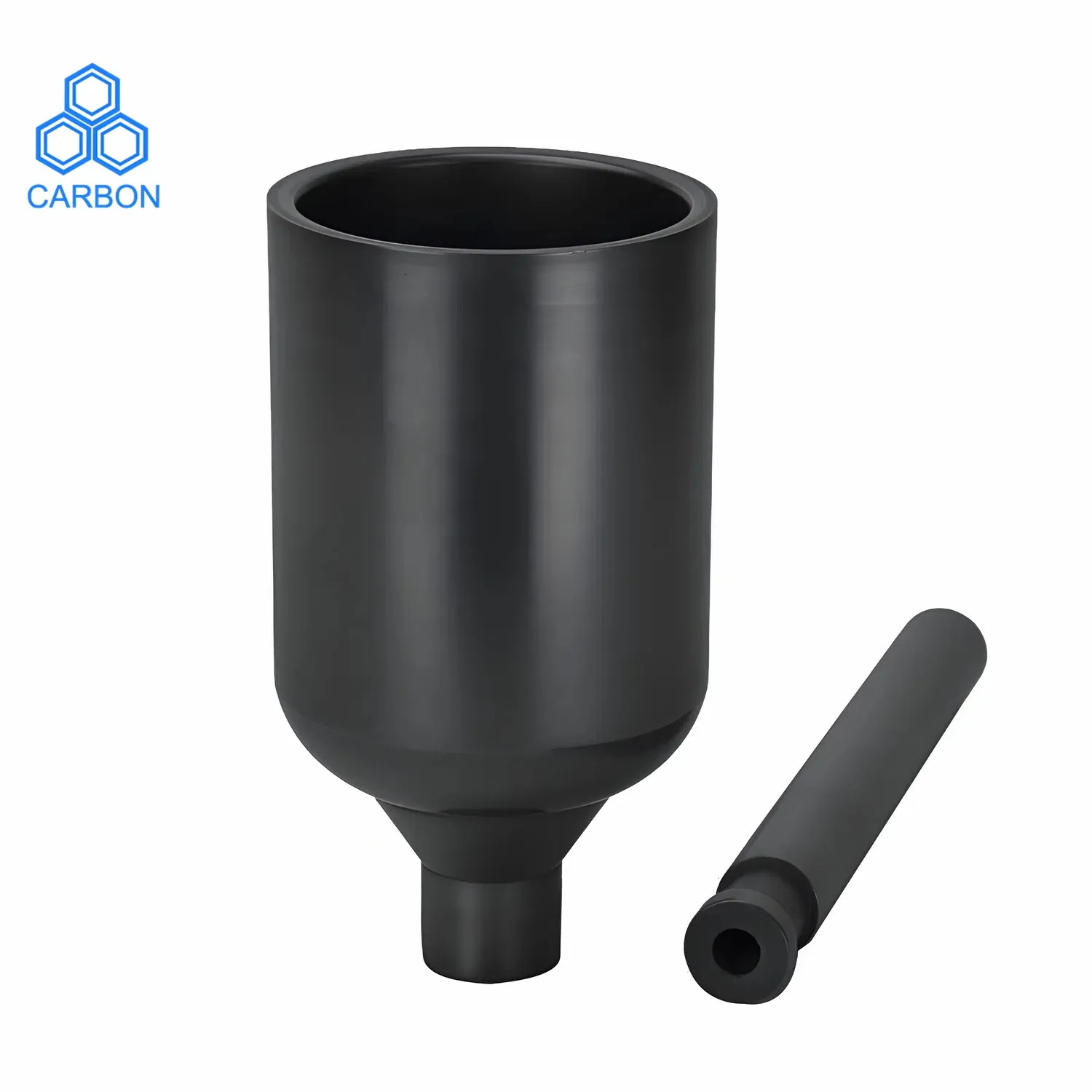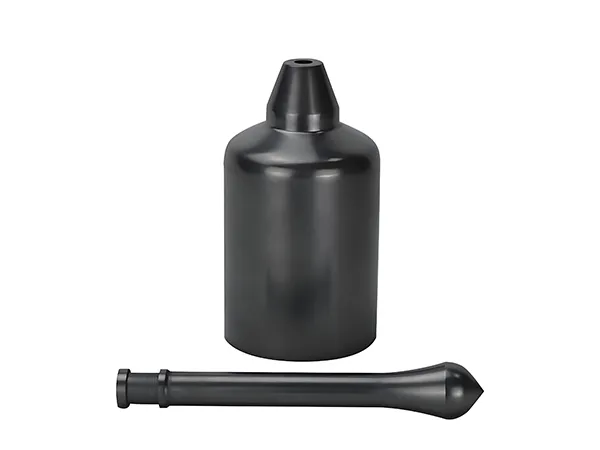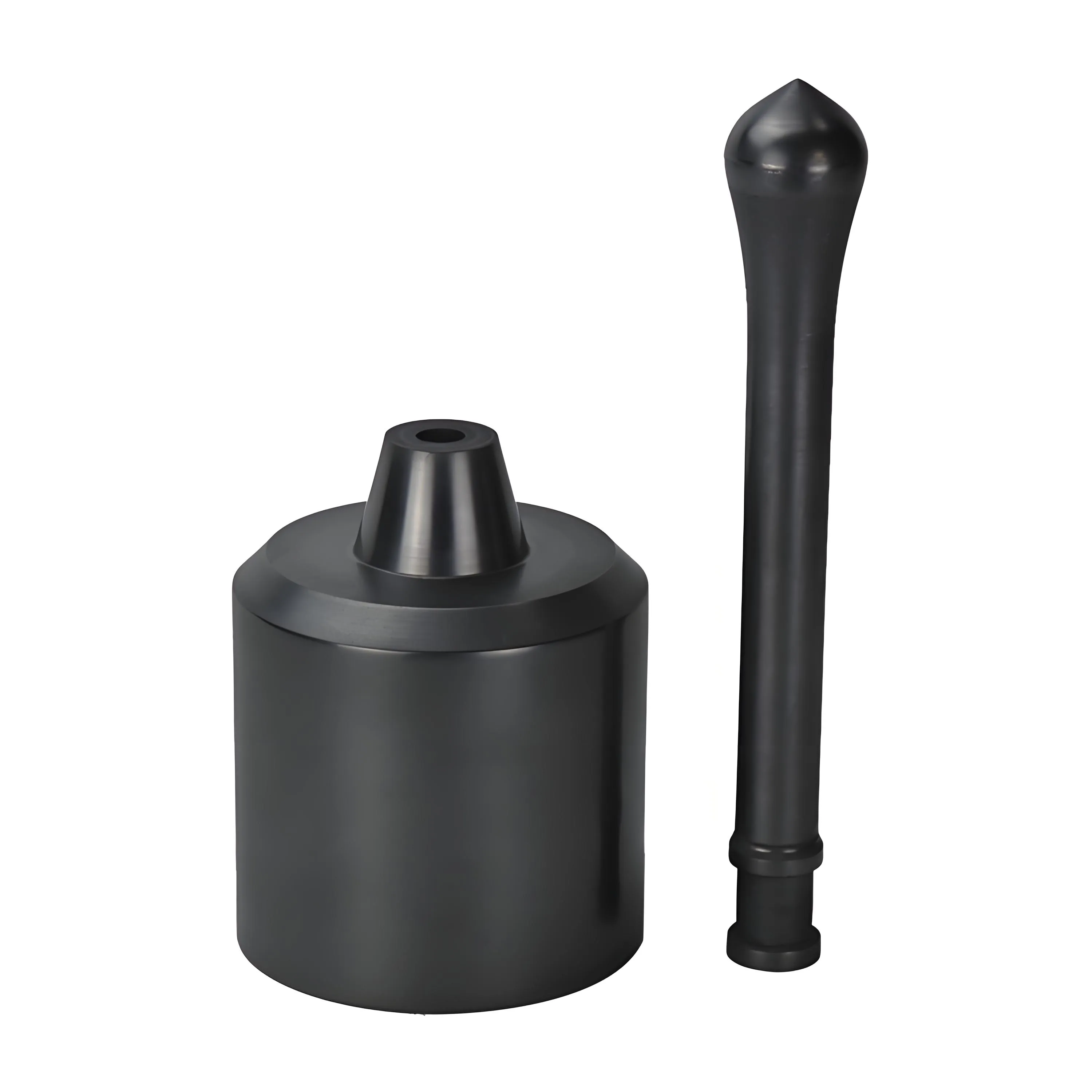Time: 2025-04-23 06:16:03 Source: Cangzhou Carbon Technology Co., Ltd.
Graphite crucibles are essential tools in high-temperature applications like metal melting, casting, and chemical processing. Their lifespan significantly impacts operational costs and productivity. Extending the life of your graphite crucible is crucial for both safety and cost-effectiveness. Graphite crucibles are susceptible to thermal shock, oxidation, and chemical attack.

Handle with Care: Graphite is brittle. Avoid dropping or banging the crucible. Use properly fitting tongs or shanks designed for your crucible size and shape. Don't roll it on the floor.
Store in a Dry Place: Graphite is porous and can absorb moisture. If heated rapidly with moisture inside, the steam generated can cause cracking or even explosion. Store crucibles off the floor in a warm, dry area. Keep them in their original packaging if possible until use.
Avoid Mechanical Stress: Don't wedge tools or charge material tightly inside, which can cause stress during heating and expansion.
First Use Preheating: New crucibles must be preheated slowly and thoroughly to drive off any absorbed moisture and to temper the binder. Follow the manufacturer's specific instructions. This often involves heating slowly to ~200-300°C (400-570°F), holding for a period, then slowly increasing to operating temperature.
Preheat Before Each Use: Even if stored correctly, preheating before every melt is good practice, especially in humid environments. A slow warm-up minimizes thermal shock.
Load Gently: Don't drop heavy ingots or scrap directly into the bottom of a cold or even hot crucible. Place them carefully.
Even Loading: Distribute the charge material as evenly as possible to promote uniform heating.
Avoid Wedging: Don't pack material tightly. Allow room for expansion as the metal heats and melts.
Start with Smaller Pieces: Use smaller pieces or returns at the bottom initially to create a molten pool before adding larger ingots.
Preheat Charge (Optional but helpful): Placing charge material on top of the furnace to preheat can reduce thermal shock to the crucible when added and speed up melting.

Heat Slowly and Evenly: Avoid rapid temperature increases, especially during the initial heat-up phase. Ensure the furnace heats the crucible uniformly.
Avoid Flame Impingement (Fuel-Fired Furnaces): Direct, concentrated flame contact on one spot can create hotspots, leading to uneven expansion, stress, and premature failure. Ensure the flame circulates around the crucible. Aim for a neutral or slightly reducing flame (less oxygen) to minimize oxidation.
Proper Furnace Fit: Ensure the crucible sits correctly on its base block/plinth within the furnace. It should be stable and centered for even heating. The base block should be flat and appropriately sized.
Don't Exceed Max Temperature: Operate within the crucible's recommended temperature range. Overheating drastically shortens life due to accelerated oxidation and potential binder breakdown. Use a pyrometer to monitor temperature accurately.
Minimize Oxidation: Keep the furnace lid closed as much as possible during melting and holding to limit air exposure. Graphite oxidizes (burns away) significantly at high temperatures (above ~500°C / 932°F).
Use Fluxes Sparingly and Correctly: While necessary for some processes, fluxes can be corrosive to graphite.
Choose the least aggressive flux suitable for your application.
Add flux after the metal is molten, not directly onto the hot crucible walls if possible.
Avoid letting flux residue build up excessively.
Stir Gently: If stirring is required, use a graphite rod or a suitably coated tool. Avoid scraping the crucible walls and bottom aggressively.
Use Proper Tongs/Shank: Ensure the pouring shank fits securely and supports the crucible correctly without pinching or point-loading it.
Pour Smoothly: Avoid jerky movements.
Don't Bang the Crucible: Avoid banging it to dislodge residual metal or slag.
Cool Slowly: After pouring, allow the crucible to cool down slowly and evenly. Leaving it inside the turned-off furnace (if safe) is often the best way. Avoid placing a hot crucible on cold surfaces or in drafts. Never quench a hot crucible with water.

Clean After Use (Carefully): Remove residual slag or metal while the crucible is still warm (but not glowing red – follow safety precautions) as it's often easier. Avoid aggressive chipping or scraping that can damage the surface.
Inspect Regularly: Before each use, inspect the crucible for cracks, excessive erosion, glaze damage (if applicable), or thin spots. Replace damaged crucibles immediately – failure during a melt is dangerous.
Dedicated Use: If possible, dedicate specific crucibles to specific alloys to prevent cross-contamination and potentially reduce chemical attack from varying metal compositions.
By following these tips consistently, you can significantly extend the service life of your graphite crucibles, saving money and ensuring safer operation. Always prioritize the manufacturer's specific recommendations for your particular type of crucible.